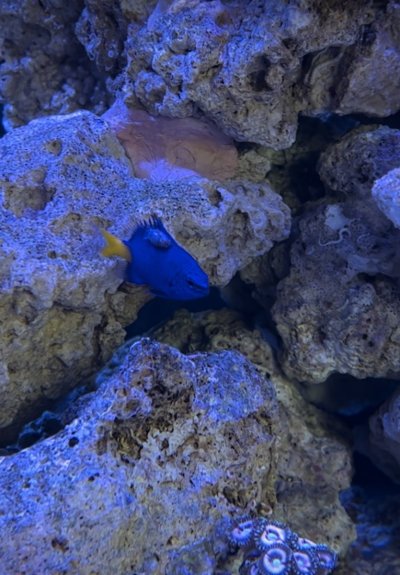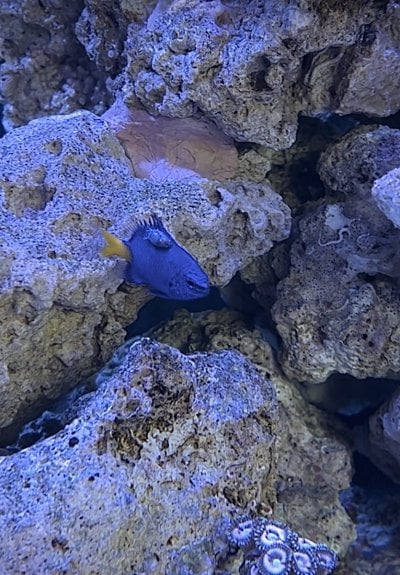Navigation
Install the app
How to install the app on iOS
Follow along with the video below to see how to install our site as a web app on your home screen.

Note: This feature currently requires accessing the site using the built-in Safari browser.
More options
You are using an out of date browser. It may not display this or other websites correctly.
You should upgrade or use an alternative browser.
You should upgrade or use an alternative browser.
Pest on damsel
- Thread starter candycanefan
- Start date
ISpeakForTheSeas
2500 Club Member
- Review score
- +0 /0 /-0
R2R Supporter
R2R Excellence Award
- Joined
- Nov 22, 2021
- Messages
- 3,058
- Reaction score
- 3,640
- Review score
- +0 /0 /-0
- Location
- United States
That looks to me like a parasitic isopod of some kind - from the few I've read about, if yours is still growing then it may jump around from one fish to another occasionally. Some species want/need really specific host species (at least as adults) and typically settle in specific places on the preferred host fish once they find one (probably the most famous example of this is the species that settles on its host's tongue).
Either way, these parasites are known for causing serious harm to their hosts (they've actually been known to kill their hosts and move on), so I'd recommend trapping that fish and removing the isopod if at all possible. Reefs.com recommends removing them using pliers:
 Edit: Welcome to Reef2Reef!
Edit: Welcome to Reef2Reef!
Either way, these parasites are known for causing serious harm to their hosts (they've actually been known to kill their hosts and move on), so I'd recommend trapping that fish and removing the isopod if at all possible. Reefs.com recommends removing them using pliers:

I have been battling Cirolanid isopods for a few weeks. Have caught 35+ thus far. Luckily a fishless system still, so I have time on my side (although it feels never ending). Best approach I have found is very manual, but requires a small net, flashlight and patience. After dark, periodically, look around the water column for anything sputtering around the water and try to check over your rock work and sand for them. Manually scoop them out and discard (I place into a bowl of freshwater until they are dead).
Hard to tell if that is also a Cirolanid, but best way to tell is their eyes. Here are the first two small ones I captured.

Hard to tell if that is also a Cirolanid, but best way to tell is their eyes. Here are the first two small ones I captured.


 . Can anyone tell me what type of pest it is and if it’s going to come off on its own?
. Can anyone tell me what type of pest it is and if it’s going to come off on its own?










